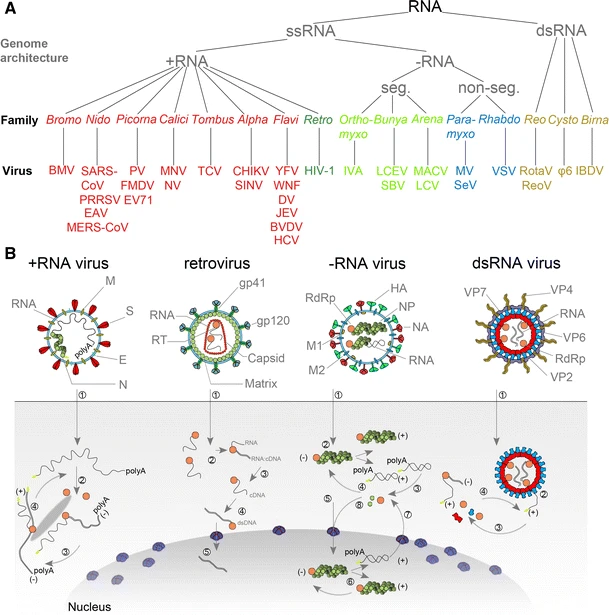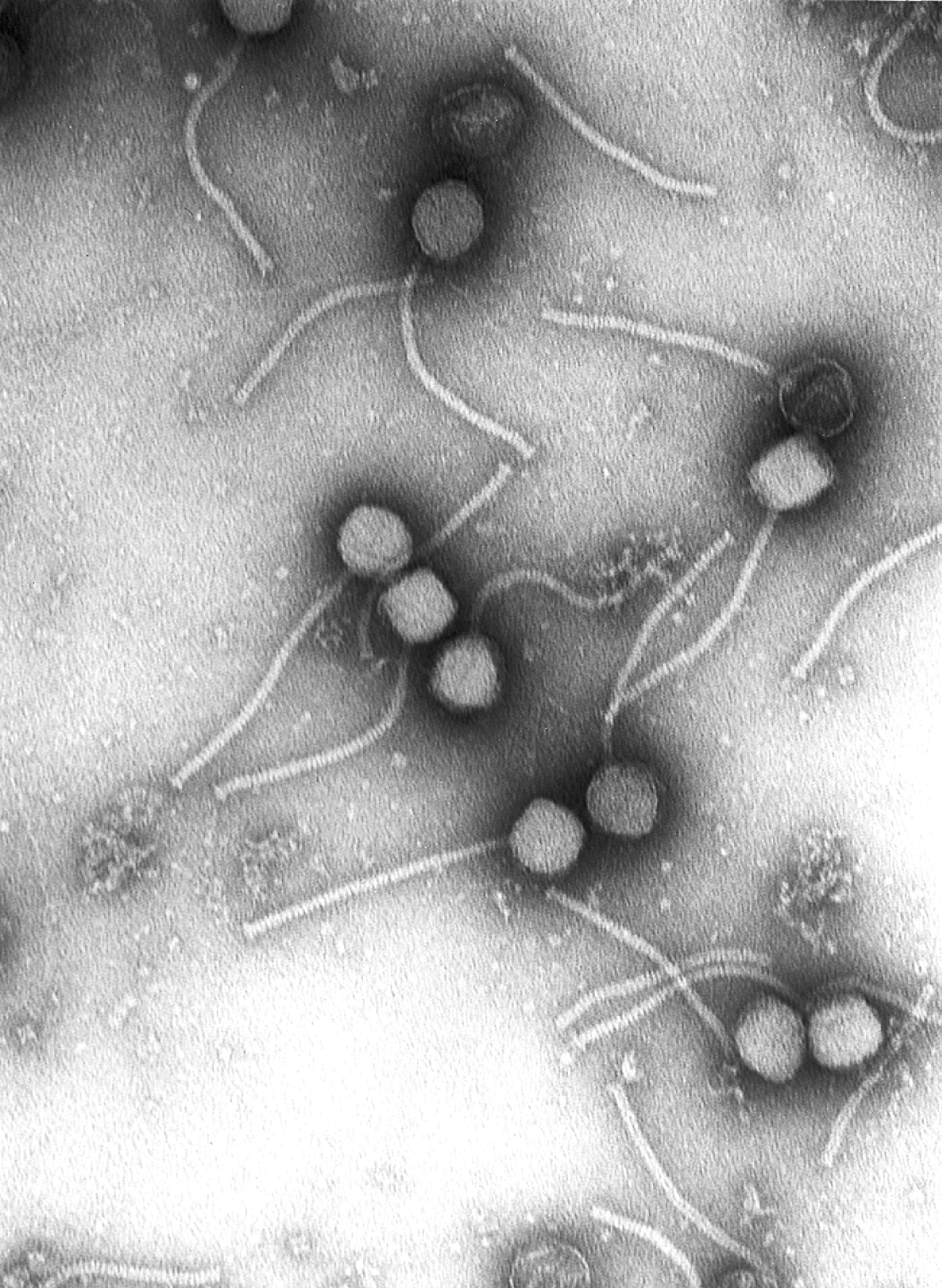|
Phytoreovirus
''Phytoreovirus'' is a genus of viruses, in the family ''Reoviridae'', in the subfamily ''Sedoreovirinae''. They are non-turreted reoviruses that are major agricultural pathogens, particularly in Asia. Oryza sativa for RDV and RGDV, dicotyledonous for WTV, and leafhoppers serve as natural hosts. There are three species in this genus. Diseases associated with this genus include: WTV: galls (tumor). RDV: dwarf (or stunt) disease of rice. RGDV: dwarfing, stunting, and galls. Classification One member of this family, Rice Dwarf Virus (RDV), has been extensively studied by electron cryomicroscopy and x-ray crystallography. From these analyses, atomic models of the capsid proteins and a plausible model for capsid assembly have been derived. While the structural proteins of RDV share no sequence similarity to other proteins, their folds and the overall capsid structure are similar to those of other reoviruses. Phytoreoviruses are unique among reoviruses in that there are 12 dsRNA seg ... [...More Info...] [...Related Items...] OR: [Wikipedia] [Google] [Baidu] |
Reoviridae
''Reoviridae'' is a family of double-stranded RNA viruses. Member viruses have a wide host range, including vertebrates, invertebrates, plants, protists and fungi. They lack lipid envelopes and package their segmented genome within multi-layered capsids. Lack of a lipid envelope has allowed three-dimensional structures of these large complex viruses (diameter ∼60–100 nm) to be obtained, revealing a structural and likely evolutionary relationship to the cystovirus family of bacteriophage. There are currently 97 species in this family, divided among 15 genera in two subfamilies. Reoviruses can affect the gastrointestinal system (such as rotaviruses) and respiratory tract. The name "reo-" is an acronym for "''r''espiratory ''e''nteric ''o''rphan" viruses''.'' The term "orphan virus" refers to the fact that some of these viruses have been observed not associated with any known disease. Even though viruses in the family ''Reoviridae'' have more recently been identified with vario ... [...More Info...] [...Related Items...] OR: [Wikipedia] [Google] [Baidu] |
Sedoreovirinae
''Sedoreovirinae'' (''sedo'' = smooth) is a subfamily of the ''Reoviridae'' family of viruses. Viruses in this subfamily are distinguished by the absence of a turreted protein on the inner capsid to produce a smooth surface. Characteristics Like other members of the ''Reoviridae'' family, viruses of the ''Sedoreovirinae'' subfamily are made of naked, icosahedral capsids containing 10-12 segments of linear double-stranded RNA (dsRNA). The Baltimore System of viral classification categorizes ''Reoviridae'' in Group III. Importance Viruses classified in the ''Sedoreovirinae'' subfamily infect a wide range of plants and animals, including some that can infect humans. There is not only the potential of a few of these viruses to cause human disease, but also to reduce the supply of crops and livestock. Viruses Genus ''Cardoreovirus'' '' Eriocheir sinensis reovirus'' was isolated out of a Chinese mitten crab ('' Eriocheir sinensis''). No currently known associated disease. Genus ''Mi ... [...More Info...] [...Related Items...] OR: [Wikipedia] [Google] [Baidu] |
Reovirus
''Reoviridae'' is a family of double-stranded RNA viruses. Member viruses have a wide host range, including vertebrates, invertebrates, plants, protists and fungi. They lack lipid envelopes and package their segmented genome within multi-layered capsids. Lack of a lipid envelope has allowed three-dimensional structures of these large complex viruses (diameter ∼60–100 nm) to be obtained, revealing a structural and likely evolutionary relationship to the cystovirus family of bacteriophage. There are currently 97 species in this family, divided among 15 genera in two subfamilies. Reoviruses can affect the gastrointestinal system (such as rotaviruses) and respiratory tract. The name "reo-" is an acronym for "''r''espiratory ''e''nteric ''o''rphan" viruses''.'' The term "orphan virus" refers to the fact that some of these viruses have been observed not associated with any known disease. Even though viruses in the family ''Reoviridae'' have more recently been identified with vario ... [...More Info...] [...Related Items...] OR: [Wikipedia] [Google] [Baidu] |
Cryo-EM
Cryogenic electron microscopy (cryo-EM) is a cryomicroscopy technique applied on samples cooled to cryogenic temperatures. For biological specimens, the structure is preserved by embedding in an environment of vitreous ice. An aqueous sample solution is applied to a grid-mesh and plunge-frozen in liquid ethane or a mixture of liquid ethane and propane. While development of the technique began in the 1970s, recent advances in detector technology and software algorithms have allowed for the determination of biomolecular structures at near-atomic resolution. This has attracted wide attention to the approach as an alternative to X-ray crystallography or NMR spectroscopy for macromolecular structure determination without the need for crystallization. In 2017, the Nobel Prize in Chemistry was awarded to Jacques Dubochet, Joachim Frank, and Richard Henderson "for developing cryo-electron microscopy for the high-resolution structure determination of biomolecules in solution." ''Nature M ... [...More Info...] [...Related Items...] OR: [Wikipedia] [Google] [Baidu] |
Orthoreovirus
''Orthoreovirus'' is a genus of viruses, in the family ''Reoviridae'', in the subfamily ''Spinareovirinae''. Vertebrates serve as natural hosts. There are ten species in this genus. Diseases associated with this genus include mild upper respiratory tract disease, gastroenteritis, and biliary atresia. Mammalian orthoreovirus 3 (strain dearing-T3D) induces cell death preferentially in transformed cells and therefore displays inherent oncolytic properties. History The name "orthoreovirus" comes from the Greek word ''ortho'', meaning "straight" and the reovirus, which comes from taking the letters: R, E, and O from "respiratory enteric orphan virus". The Orthoreovirus was named an orphan virus because it was not known to be associated with any known disease. It was discovered in the early 1950s when it was isolated from the respiratory as well as gastrointestinal tracts of both sick and healthy individuals Classification ''Orthoreovirus'' is part of the family ''Reoviridae''. Its g ... [...More Info...] [...Related Items...] OR: [Wikipedia] [Google] [Baidu] |
Viral Plant Pathogens And Diseases
Viral means "relating to viruses" (small infectious agents). Viral may also refer to: Viral behavior, or virality Memetic behavior likened that of a virus, for example: * Viral marketing, the use of existing social networks to spread a marketing message * Viral phenomenon, relating to contagion theory or the "virality" of network culture, such as a meme * Viral video, a video that quickly attains a high popularity Titled works * ''Viral'' (2016 American film), a 2016 American science fiction horror drama * ''Viral'' (2016 Hindi film), an Indian Bollywood film based on social media * ''Viral'' (web series), a 2014 Brazilian comedy web series * '' V/H/S: Viral'', an American anthology horror film * '' Viral: The Search for the Origin of COVID-19'', a book by Alina Chand and Matt Ridley See also * ''Virals'', a novel series by Kathy Reichs * Virulence Virulence is a pathogen's or microorganism's ability to cause damage to a host. In most, especially in animal system ... [...More Info...] [...Related Items...] OR: [Wikipedia] [Google] [Baidu] |
Animal Virology
Veterinary virology is the study of viruses in non-human animals. It is an important branch of veterinary medicine. Rhabdoviruses Rhabdoviruses are a diverse family of single stranded, negative sense RNA viruses that infect a wide range of hosts, from plants and insects, to fish and mammals. The ''Rhaboviridae'' family consists of six genera, two of which, cytorhabdoviruses and nucleorhabdoviruses, only infect plants. Novirhabdoviruses infect fish, and vesiculovirus, lyssavirus and ephemerovirus infect mammals, fish and invertebrates. The family includes pathogens such as rabies virus, vesicular stomatitis virus and potato yellow dwarf virus that are of public health, veterinary, and agricultural significance. Foot-and-mouth disease virus Foot-and-mouth disease virus (FMDV) is a member of the Aphthovirus genus in the Picornaviridae family and is the cause of foot-and-mouth disease in pigs, cattle, sheep and goats. It is a non-enveloped, positive strand, RNA virus. FMDV is a ... [...More Info...] [...Related Items...] OR: [Wikipedia] [Google] [Baidu] |
List Of Viruses
This is an index of lists of virus taxa. By taxonomic rank * List of higher virus taxa, i.e. all taxa above the rank of family * List of virus families and subfamilies * List of virus genera :''This is a list of genera of biological viruses. See also Comparison of computer viruses.'' This is an alphabetical list of genera of biological viruses. It includes all genera and subgenera of viruses listed by the International Committee on ... (also includes subgenera) * List of virus species {{List of lists, biology * ... [...More Info...] [...Related Items...] OR: [Wikipedia] [Google] [Baidu] |
RNA Virus
An RNA virus is a virusother than a retrovirusthat has ribonucleic acid (RNA) as its genetic material. The nucleic acid is usually single-stranded RNA ( ssRNA) but it may be double-stranded (dsRNA). Notable human diseases caused by RNA viruses include the common cold, influenza, SARS, MERS, Covid-19, Dengue Virus, hepatitis C, hepatitis E, West Nile fever, Ebola virus disease, rabies, polio, mumps, and measles. The International Committee on Taxonomy of Viruses (ICTV) classifies RNA viruses as those that belong to ''Group III'', ''Group IV'' or ''Group V'' of the Baltimore classification system. This category excludes ''Group VI'', viruses with RNA genetic material but which use DNA intermediates in their life cycle: these are called retroviruses, including HIV-1 and HIV-2 which cause AIDS. As of May 2020, all known RNA viruses encoding an RNA-directed RNA polymerase are believed to form a monophyletic group, known as the realm '' Riboviria''. The majority of such RNA ... [...More Info...] [...Related Items...] OR: [Wikipedia] [Google] [Baidu] |
Virology
Virology is the Scientific method, scientific study of biological viruses. It is a subfield of microbiology that focuses on their detection, structure, classification and evolution, their methods of infection and exploitation of host (biology), host cell (biology), cells for reproduction, their interaction with host organism physiology and immunity, the diseases they cause, the techniques to isolate and culture them, and their use in research and therapy. The identification of the causative agent of tobacco mosaic disease (TMV) as a novel pathogen by Martinus Beijerinck (1898) is now acknowledged as being the history of virology, official beginning of the field of virology as a discipline distinct from bacteriology. He realized the source was neither a bacterial nor a fungal infection, but something completely different. Beijerinck used the word "virus" to describe the mysterious agent in his 'contagium vivum fluidum' ('contagious living fluid'). Rosalind Franklin proposed the f ... [...More Info...] [...Related Items...] OR: [Wikipedia] [Google] [Baidu] |
Microbiology
Microbiology () is the scientific study of microorganisms, those being unicellular (single cell), multicellular (cell colony), or acellular (lacking cells). Microbiology encompasses numerous sub-disciplines including virology, bacteriology, protistology, mycology, immunology, and parasitology. Eukaryotic microorganisms possess membrane-bound organelles and include fungi and protists, whereas prokaryotic organisms—all of which are microorganisms—are conventionally classified as lacking membrane-bound organelles and include Bacteria and Archaea. Microbiologists traditionally relied on culture, staining, and microscopy. However, less than 1% of the microorganisms present in common environments can be cultured in isolation using current means. Microbiologists often rely on molecular biology tools such as DNA sequence based identification, for example the 16S rRNA gene sequence used for bacteria identification. Viruses have been variably classified as organisms, as they have ... [...More Info...] [...Related Items...] OR: [Wikipedia] [Google] [Baidu] |
Wound Tumor Virus
Wound tumor virus is an invertebrate and plant virus found in the United States of America belonging to the genus Phytoreovirus and the family Reoviridae. The virus is a Type III virus under the Baltimore classification, Baltimore classification system; that is it has a double-stranded RNA genome. This genome is approximately 25,000 base pairs long and organised into twelve segments. All the viral replication occurs in the cytoplasm. The virus is 22% RNA by weight, the other 78% being structural proteins. Structurally, the virus is constructed from 7 different structural proteins. The capsid has icosahedral symmetry, is non-enveloped and around 70 nm in diameter. There is an inner-shell with a diameter of around 50 nm. More than 50 species of plants are potential hosts for Wound tumor virus. It was first reported in Melilotus officinalis. The virus causes tumors to form on the plant at the stem and roots – with the root tumors being more severe. The virus is spread b ... [...More Info...] [...Related Items...] OR: [Wikipedia] [Google] [Baidu] |







